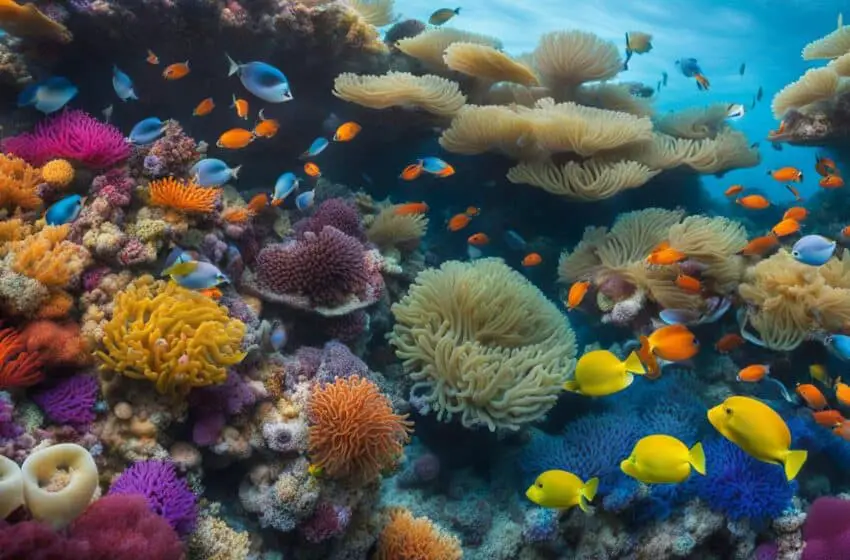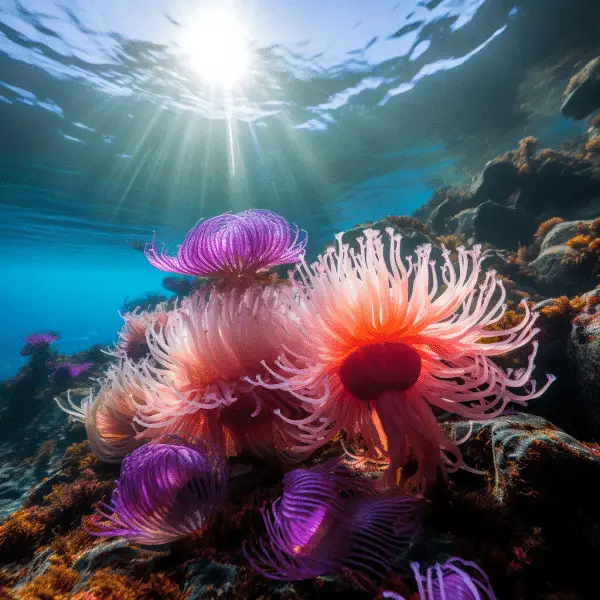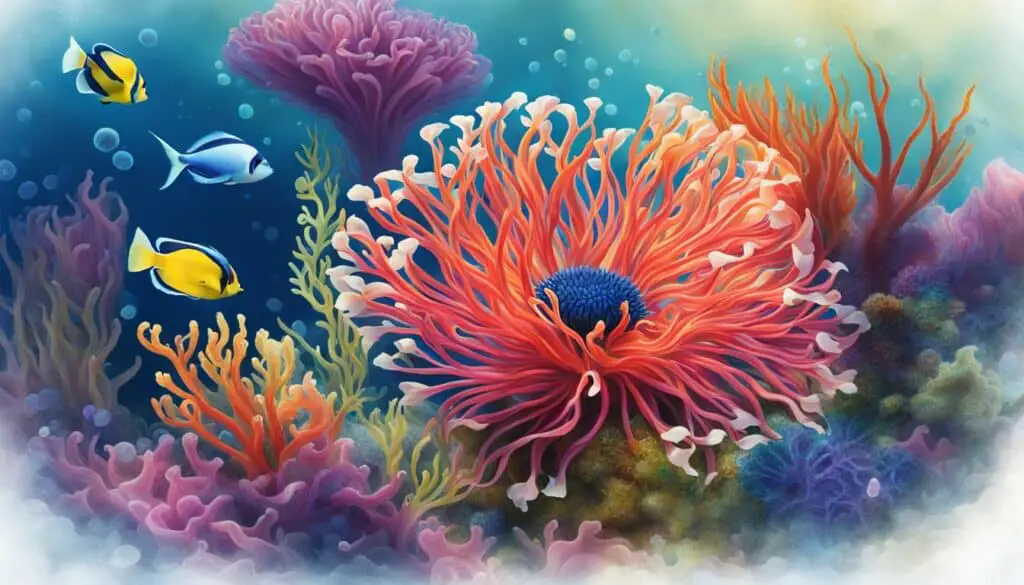Anemones: Keystone Species Thriving In Acidified Oceans

Sea anemones play a crucial role in marine ecosystems, with their ecological contributions shaping the balance and stability of underwater habitats. These solitary marine invertebrates have achieved remarkable success despite their simple structure, making them a fundamental part of marine biodiversity. They live in all kinds of marine settings, at all depths, and in all kinds of weather. This makes them very important to the environment.
Key Takeaways:
- Anemones play essential ecological roles in marine ecosystems, including predation, defense, and competitor deterrence.
- They use the poison they make to catch food and keep themselves safe.
- Anemones form symbiotic relationships with algae, receiving energy through photosynthesis.
- They are called “keystone species” because they improve biodiversity and do important things for the environment.
- Anemones exhibit resilience to ocean acidification, thriving in acidified conditions and potentially serving as climate change indicators.
Anemones as Keystone Species and their Contribution to Biodiversity

Anemones play a crucial role as keystone species in marine ecosystems, exerting far-reaching ecological impacts. These remarkable creatures provide important ecosystem services and enhance biodiversity in various ways. One of their primary contributions is habitat creation. Anemones form reefs and provide shelter for a wide range of organisms, including fish, crustaceans, and mollusks. These microhabitats support diverse communities, promoting the overall health and stability of marine ecosystems.
In addition to habitat creation, anemones have unique ecological functions that further contribute to biodiversity. They influence water flow and nutrient cycling, shaping the dynamics of their surrounding environments. By modulating these processes, anemones create favorable conditions for other species to thrive, fostering a rich and interconnected web of marine life.
Also, everyone knows that anemones and green algae get along well. This is how the algae help the anemones stay alive and grow: they use light to make energy. These anemones and the many other animals that depend on them for food and a place to live get along well.
Anemones: Guardians of Marine Ecosystems
“The ecological benefits of anemones cannot be overstated. They are like guardians, shaping the very fabric of marine ecosystems and ensuring the balance and resilience of these fragile habitats.” – Marine Ecologist
By understanding the role of anemones as keystone species, we gain valuable insights into the intricate workings of marine ecosystems. Their contributions to biodiversity and ecosystem services highlight the importance of preserving and protecting these unique creatures and the habitats they create. Further research and conservation efforts are vital to ensure the long-term health and sustainability of our oceans.
| Anemone Species | Ecological Functions |
|---|---|
| Metridium senile | Enhances water flow and nutrient cycling |
| Actinia equina | Creates microhabitats and provides shelter |
| Condylactis gigantea | Forms symbiotic relationships with algae |

Anemones and their Ecological Resilience to Ocean Acidification
Seas that are too acidic are getting a lot of attention as a problem. This link has more information about it. For corals and other plants that need calcium carbonate to grow, this process hurts a lot of ocean life. It happens because there is more CO2 in the water.
A new study, however, shows that sea anemones, which are related to corals but don’t have hard shells, are surprisingly strong against salty water. These tough animals do really well in salty places.
Researchers have observed that sea anemones not only adapt to higher levels of carbon dioxide but actually benefit from them. In these conditions, anemones experience increased growth rates and greater abundance. The reason behind their resilience lies in their symbiotic relationship with algae, which provides them with additional energy to fuel their growth.
These findings shed light on the adaptive capabilities of anemones and their potential to withstand the impacts of climate change. While many organisms are struggling to survive in an increasingly acidic ocean, anemones seem to have found a way to thrive. However, further research is crucial to fully understand the broader ecological and biogeochemical implications of these changes and determine how they might affect other non-calcifying relatives of corals.
FAQ
What ecological roles do anemones play in marine ecosystems?
Anemones play essential ecological roles in marine ecosystems, including predation, defense, and competitor deterrence. They contribute to the balance and stability of marine ecosystems.
Why are anemones considered keystone species?
Anemones are considered keystone species due to their far-reaching ecological impacts. They provide important ecosystem services, such as habitat creation, and enhance biodiversity by creating microhabitats that support a variety of other species.
How do anemones contribute to the overall health of marine ecosystems?
Anemones have unique ecological functions, such as influencing water flow and nutrient cycling, which contribute to the overall health and functioning of marine ecosystems.
Can anemones thrive under acidified conditions?
Recent research has shown that non-calcifying relatives of corals, including sea anemones, can thrive under acidified conditions. They grow larger and more abundant in environments with elevated levels of carbon dioxide, a key driver of ocean acidification.
Why are anemones resilient to ocean acidification?
Anemones’ resilience to ocean acidification is attributed to an increase in the productivity of their symbiotic algae, which provide them with additional energy to grow.
What are the potential ecological consequences of anemones’ resilience to ocean acidification?
Further research is needed to understand the broader ecological and biogeochemical consequences of anemones’ resilience to ocean acidification and how it may affect other non-calcifying relatives of corals.



